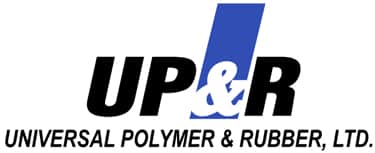Category Archive: Manufacturing Growth
American manufacturing is most definitely back in a big way—and it’s also definitely one of the most competitive and innovative manufacturing industries in the world. In order to remain competitive, American companies must continuously improve and focus on bettering their operations and products on a minute-to-minute basis.
This extreme focus on continuous improvement is something we take very seriously, and very personally. We realize the level of trust our clients put in us, and we’ll never sit back and rest on past success. We know that no matter how good a business is, there’s always room for improvement, and in order to continue to improve internally and remain profitable, this method must be implemented, maintained, and tracked throughout every aspect of the business.
We do this in a number of ways. One of them is through benchmarking, a practice that goes hand-in-hand with our continuous improvement efforts. Just as coaches of successful sports teams look at what other teams are doing effectively, and then use those principles and practices, we, as a manufacturer, do the same.
We often find the best use of benchmarking is by looking at our customers, for whom we have great respect. We will visit customers’ manufacturing facilities and see how they perform certain operations, picking and choosing what’s successful and relevant to our own facilities.
One customer of ours, a Tier 1 supplier, demonstrated an innovative inventory storage system, showing what was last produced and what stock was oldest. We subsequently implemented the same method with great success.
Another Tier 1 client of ours was holding daily meetings to track action items—now we use the same practice in our Advanced Product Quality Planning (APQP).
Using benchmarking along with our other practices in continuous improvement allows us to achieve across-the-board progress, while setting a baseline and tracking our growth along the way. While not every change occurs overnight, but rather is a constant work in progress with consistent forward momentum, it all leads to noticeable success.
It wasn’t long ago when everyone was convinced that all American manufacturing jobs would end up in China permanently. Before China, manufacturing was sent overseas to Japan, and to Taiwan before then. Due to the low cost in these areas, many manufacturers went overseas. New research from the Boston Consulting Group, however, shows that China and the U.S. are now almost equal when it comes to manufacturing costs. That brings up the question, where will manufacturing go next?
Due to rising labor costs and a burgeoning middle class in China, along with higher productivity in the U.S., offshore manufacturing will soon be looking for a new home. According to this article from BusinessWeek, some countries with low manufacturing costs include Indonesia, India, Mexico, and Thailand.
The key here is not just low cost labor, but also access to transportation, political stability, skilled workers, and a solid infrastructure. Some experts believe it is only a matter of time until Africa becomes a player in the manufacturing field, thanks in part to heavy infrastructure investment from China, as seen in this report. Africa is a place of huge potential with many natural resources—we also think it is only a matter of time until manufacturing enters this area.
As is the case with any area, the natural evolution of manufacturing and its effect on the economy forces manufacturers to move around for lower costs. Manufacturing is consistently searching for the next area that is the best place to get parts made. In the end, it is difficult to predict where manufacturing will end up after China, but it is clear that the tide is changing quickly. At Universal Polymer, we hope that America’s manufacturers can take advantage of this dramatic shift and make the U.S. a manufacturing power once again.
If you are familiar with the 5S methodology, you’ll know how useful it is in manufacturing. And if you know how truly useful it is, you’ll understand how pleased we are at Universal Polymer & Rubber to be implementing the 5S principles, and to be seeing it all come together so well for us.
5S is a Japanese workplace organizational discipline that specifically stands for 5 words—seiri, seiton, seiso, seiketsu, and shitsuke. They refer to neatness, sorting, and disciplined organization, and the principle was first brought to the U.S. in the 1980s when Japanese automakers began establishing a presence in America. Since then, 5S has spread beyond automaking to encompass all of manufacturing, and it has become part of the mantra of successful manufacturing.
In essence, the idea of 5S is continuous improvement through a disciplined way of organizing and keeping order. Everything has a place, and there is a place for everything. Nothing should be carelessly or haphazardly thrown or stored anywhere; everything should be kept neatly in its proper area.
In this way, everyone within the organization gets into a routine, and things are kept neat. But beyond that, when everything is kept neat and the clutter is gone, it becomes easier for each person to look clearly at his or her work zone and see the areas for improvement. It ensures a clear picture and, in the end, a quality of work.
Additionally, maintaining the 5S method presents the right picture to customers who visit a facility; when clients visit suppliers whose warehouses are exceptionally organized and efficient, they feel assured that everything is in order and quality is consistently achieved.
For a long time, we have been very interested in implementing 5S practices, but weren’t physically able to given the lack of space at our facilities. Now, having recently finished our warehouse upgrades/renovations, we have been able to accomplish this, and we’re very pleased with the results already.
Of course, 5S is a work in progress, a never-ending quest for improvement; our facilities look significantly better than they did six weeks ago, and not as good as they will look six weeks from now. It’s all part of our plan to continue delivering the quality we always have, but never being satisfied with “good enough.”
In many ways, manufacturing is the art of managing the unpredictable. In order to take a product or part from initial idea to completion, skill, hard work, and just a bit of luck are needed. There are a variety of things that can go astray during the manufacturing process; here are some of the more common ones:
Material Inconsistency
When working with a variety of suppliers, it’s difficult to sometimes keep track of all of the different parts and materials, and where they are coming from. When it comes to materials, they must be consistent to work; coordination with suppliers and ensuring the materials are of the same compound is essential and doesn’t always work out.
Weather
If the past winter has taught us anything, it is that weather cannot be counted on. Day after day of snow and frozen roads have stopped manufacturers in their tracks. In fact, U.S. manufacturing output fell sharply in January 2014 almost exclusively because of the cold weather, as seen in this article.
The Human Element
People do manufacturing, and people are not perfect. We all have bad days. While this variable is hard to control, you must take it into account in everything you do.
So, what is the answer? How can you avoid having your production lines come to a screeching halt? As we mentioned before, the key is preparation. You must do everything in your power to reduce the impact of these variables. It helps to have a couple of things locked down.
Preventative and Predictive Maintenance
If you keep your machinery in top shape at all times, you instantly lower the likelihood of a sudden breakdown. It really is that simple.
Proper coordination with suppliers
If you trust your supplier, it takes away a giant worry. If you know they are putting their reputation behind everything they send your way, it makes life so much easier. Plus, you also know they will go out of their way to make it right if something does go wrong.
At Universal Polymer, we believe that we fall into this category. We are the kind of company that will make every effort possible to eliminate worry from the equation. Our rubber and plastic extrusions and rubber moldings are of the highest quality and we stand behind everything we make. We can’t solve all your problems, but at least you will be able to trust your rubber and plastic gaskets, straps, and tubes!
While most of the country is worrying about staying warm and digging out from another polar vortex, it’s spring and summer time at Universal Polymer! Well, don’t get us wrong, it is still very (very!) cold here in Ohio. However, this is the time of year orders for plastic and rubber extrusions come flooding in from companies that specialize in warmer weather products. That is the thing about the start of every year, while there is a manufacturing and construction lull during the holidays, it disappears the second the calendar flips to January and February. So, who are the companies and industries that are working so hard to plan for the long hot days of summer?
The lawn care and lawn mower industry is one such industry in full manufacturing mode. According to experts, consumer lawn and garden equipment is worth staggering $5 billion and close to 68 million American households maintain their own lawns. As you can imagine, some of the biggest names in the industry are currently running 24-7 to be ready to satiate this overwhelming demand. If you look at a lawnmower, you can see that rubber molding, and rubber and plastic extrusions, play a major role in keeping them running at peak performance.
The outdoor equipment industry is starting to slow around May, which is when the construction season is just being ramped up. The construction industry, which was worth $900 billion in 2013, must take full advantage of the warmer weather to get projects started and completed before the cold weather returns.
For us at Universal Polymer, it is critical that we time these seasonal shifts carefully. In order to maximize profits and keep our customers happy year in and year out, we make sure to expedite production during the busier times. So, never fear, no matter what time of year it is, Universal Polymer is prepared to handle what ever you can throw at us!


